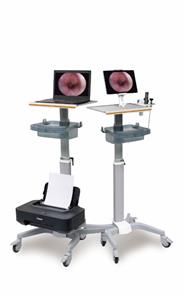The origin and evolution of endoscopes
The endoscope enters the human body through the natural orifice of the human body, or through a small incision made by surgery. An endoscope is a commonly used medical device. It consists of a bendable part, a light source and a set of lenses. When in use, the endoscope is introduced into the pre-examined organ, and the changes in the relevant parts can be directly observed. The quality of the image directly affects the use effect of the endoscope, and also marks the development level of the endoscope technology.
The world's first endoscope was created in 1853 by the French doctor De Somio. An endoscope is a commonly used medical device. It consists of a head end, a bending part, an insertion part, an operation part and a light guide part. When in use, firstly connect the light guide part of the endoscope to the matching cold light source, then insert the insertion part into the pre-examined organ, and control the operation part to directly peek at the lesions of the relevant parts.
The earliest endoscopes were used for rectal examinations. The doctor inserts a hard tube into the anus of the patient, and observes the lesions of the rectum with the help of the light of a candle. The diagnostic information that can be obtained by this method is limited, and the patient is not only very painful, but also because the instrument is very hard, the risk of perforation is very high. Due to these shortcomings, endoscopy has continued to be used and developed, and many different purposes and different types of instruments have been gradually designed.




